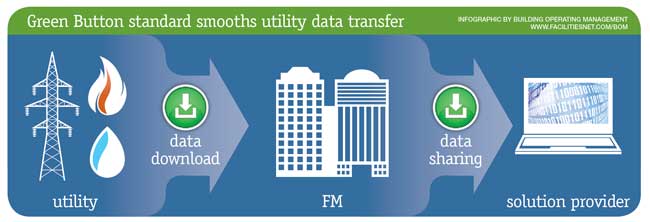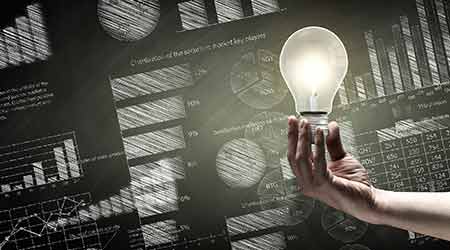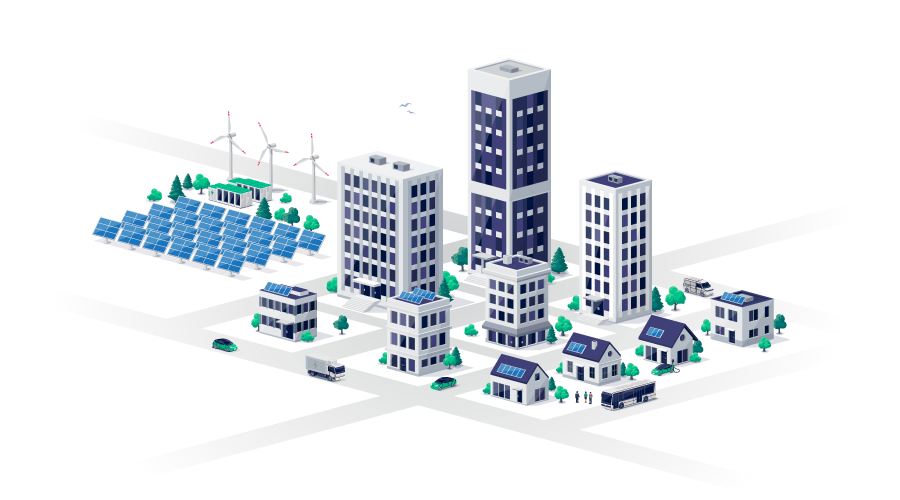How Focused Data Use Analysis Leads To Energy Efficiency
When it comes to energy data analysis, some is good, but more is almost always better.
One axiom of utility data analysis is that, once some interesting insights have been culled from utility bills, more detailed usage analysis will be desired. Utility bills don’t tell how much was used at what time on which day, or by which device. Bills for infrequent deliveries of water, oil, or propane usually only show delivery dates and amounts, not when consumption took place. Such “chunky” data makes correlation with outdoor temperature via degree-day analysis (called “weather normalization”) rather difficult, if not impossible. To perform such analyses, more robust data must be secured. Fortunately, low-cost technology is readily available to provide it.
Focused usage analysis is possible without having to deck out your entire building with sensors and data loggers, or to purchase an expensive BAS. One relatively low cost option for separating electric usage by device or circuit uses sensors that clamp onto (but do not break into) wiring in circuit breaker panels. Other contact devices are available that capture operating times of motors and relays by measuring changes to their magnetic fields as they cycle on or off. To monitor gas and water usage, clamp-on liquid flow meters are available that do not require interruption of flow or cutting into pipes. Some use ultrasonic sound to measure flow. Usage data is then transmitted using a facility’s WiFi/Ethernet network, or a cellular network, and data gathering software is usually included with the equipment.
An alternative to using sensors is to secure detailed data from the utility meter, and use analysis software to disaggregate loads. Your utility company may provide downloadable files for meters with greater demand (~500kW), or provide detailed data in Green Button format. The disadvantage is that there’s a delay in when this is made available, often 24 hours. This means you can only address problems a day after they have occurred — better to avoid them all together! To get detailed meter readings in real time, you can use an optical meter reading device. These devices have a built-in camera and use OCR (optical character recognition) to read your meter on an ongoing basis.

Utilities across the country have started to share customer data in a standard XML format and protocol known as “Green Button Connect,” providing FMs a cost-effective and secure way of getting higher definition data.
The accuracy of the results may depend on the “granularity” (i.e., length of measuring interval) involved. While 15-minute or hourly readings allows segregation of usage by categories such as overall lighting, HVAC, and plug load, one- to five-minute data may be used to identify individual loads (e.g., specific motors).
Where digital meters exist, real time data may be taken directly from them. Specialized hubs, equipped with Zigbee radio transmitters, feed detailed meter data from smart meters to other devices on a facility’s network. As with other solutions, the collected data may also be transmitted to cloud-based software for further analysis.
Getting data in a useful format
The cost of processing data may be greatly reduced if utilities provide it in a machine-readable format. Currently, most utilities offer only bill and meter data in paper or PDF format, sometimes as downloadable files with summary information. Another obstacle to gaining insights from bill data is that utilities do not use standardized names for billable quantities. “Pulling apart utility bills takes expertise,” says Cullen Kasunic, co-founder of United Wind, which leases distributed wind systems. “The more utility data can be standardized, the easier it will be to invest in more efficient and sustainable solutions. People talk about cutting soft cost, and this may be one of the most undiscussed barriers.”
As Kasunic emphasizes, it costs customers considerable amounts of time and money to access their bill and meter data. Michael Murray, co-founder and president of the Mission:data Coalition, a non-profit which represents over 40 energy efficiency technology companies, points out that “unfortunately, accessing usage data has been expensive, because each utility handles things differently. That’s why it’s so important that a customer’s usage data must be available in machine-readable form as part of ‘basic utility service’ and should be made available for free by all utilities.” Murray has made his case in many public utility commission proceedings across the country, from California to New York, where utilities are pursuing advanced metering infrastructure (AMI) deployments.
Thanks to organizations like Mission:data, utilities across the country have now started to share customer data in a new standard XML format and protocol known as “Green Button Connect.” Customers may download their own XML file, or authorize a service provider — for example an energy analysis software vendor — to access it for them through an ongoing web service. This process is a more cost effective way of getting higher definition data, and is also more secure. There is no need to share a customer’s utility account username and password with anyone, and the customer may manage who has access to the web service data.
Data integration for ongoing analysis
To capture the most value from these options, facility managers — not just accountants — need to see utility billing information. Those analyzing utility bill data also need to be able to see meter data. In a modern company, access to it should be available with minimal fuss and restriction as soon as it’s available. Using a centralized database with a web-based analysis platform that combines meter and bill data can help make that happen.
Easy access to utility data also reduces the cost of working with outside vendors who can help the firm cut utility costs, measure and verify savings, and properly evaluate future options, such as power storage and on-site generation. Rather than merely helping identify existing operational problems after they hit the bottom line, utility data becomes a tool to proactively address new issues as soon as they occur — before money is lost.
Klaar De Schepper is a consultant who specializes in utility data management with her company Flux Tailor. She can be reached at klaar@fluxtailor.com.
Email comments to edward.sullivan@tradepress.com.
Related Topics:















